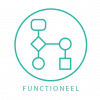Lab:V3.0.0 FHIR Lab2zorg: verschil tussen versies
(Typos) |
(Structure) |
||
| Regel 26: | Regel 26: | ||
* {{fhir|Observation}} and one or more {{fhir|Observation.component}} elements. | * {{fhir|Observation}} and one or more {{fhir|Observation.component}} elements. | ||
** components of an Observation are not accessible individually. Whenever you access the Observation, you also access all its components. This is mostly useful when certain context is provided around the result. For lab observations this is expected to be less common. An example outside of the lab realm could be BloodPressure where systolic, diastolic, and cuff size are all in 1 Observation with 3 components. | ** components of an Observation are not accessible individually. Whenever you access the Observation, you also access all its components. This is mostly useful when certain context is provided around the result. For lab observations this is expected to be less common. An example outside of the lab realm could be BloodPressure where systolic, diastolic, and cuff size are all in 1 Observation with 3 components. | ||
| + | |||
| + | =Use case: Health professional sends order to lab and receives result from lab= | ||
| + | '''TODO''' | ||
| + | |||
| + | =Use case: Health professional retrieves lab results= | ||
| + | '''DO''' | ||
| + | |||
| + | =Use case: Health professional sends lab results to other health professional= | ||
| + | '''DO''' | ||
| + | |||
| + | =Use case: Health professional reports result leading into a notification "new lab results" for subscribed healthcare professional(s)= | ||
| + | '''DO''' | ||
Versie van 23 feb 2022 om 14:31
|
|
This article or section is in the middle of an expansion or major restructuring and is not yet ready for use. |

Inhoud
- 1 Introduction
- 2 Use case: Health professional sends order to lab and receives result from lab
- 3 Use case: Health professional retrieves lab results
- 4 Use case: Health professional sends lab results to other health professional
- 5 Use case: Health professional reports result leading into a notification "new lab results" for subscribed healthcare professional(s)
1 Introduction
This page describes the technical design of Lab2Zorg (Lab2Healthcare) as a subset of the Information standard lab exchange. This technical specification is implementer centric and complements the functional design. This page uses various terms as defined in the glossary (NL: Begrippenlijst). This page implements general principles applicable to FHIR as outlined by a central FHIR IG for R4. Please make sure you familiarize yourself with both the functional design and the FHIR IG for full appreciation of the context of this page.
Many laboratory result observations have important relationships to other observations and need to be grouped together. The FHIR specification defines several structures to do this:
Observationand one or moreObservation.hasMemberelements.- Each
.hasMemberelement references another Observation and the Observation with.hasMemberelements thus serves as grouper for all Observation it references. Each Observation can be accessed individually. This is useful for panels and/or batteries of tests. This is what NL-CM:13.1.3 LaboratoryTest maps into. - Note that while FHIR Observation also allows reference of resource types MolecularSequence | QuestionnaireResponse, there is no identified use case for that at time of writing.
- An Observation without
.hasMemberelements is expected to be an individual result and has a value when one can be/is determined.
- Each
Observationand one or moreObservation.derivedFromelements.- Each
.derivedFromelement references another Observation references related measurements the observation is made from. This is what NL-CM:13.1.33 RelatedResult::LaboratoryTestResult maps into. - Note that while FHIR Observation also allows reference of resource types DocumentReference | ImagingStudy | Media | QuestionnaireResponse | MolecularSequence, there is no identified use case for those at time of writing.
- Each
Observationand one or moreObservation.componentelements.- components of an Observation are not accessible individually. Whenever you access the Observation, you also access all its components. This is mostly useful when certain context is provided around the result. For lab observations this is expected to be less common. An example outside of the lab realm could be BloodPressure where systolic, diastolic, and cuff size are all in 1 Observation with 3 components.
2 Use case: Health professional sends order to lab and receives result from lab
TODO
3 Use case: Health professional retrieves lab results
DO
4 Use case: Health professional sends lab results to other health professional
DO
5 Use case: Health professional reports result leading into a notification "new lab results" for subscribed healthcare professional(s)
DO

